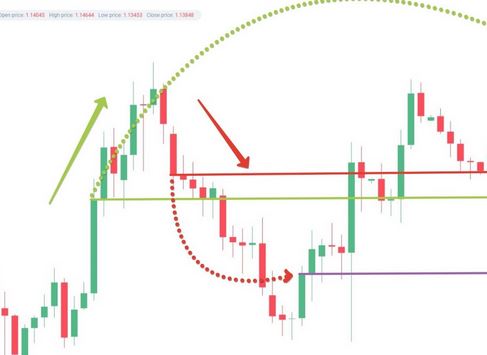Forex Hedging means preparing for a possible loss by making up for it with a profit in another currency pair. It’s a short-term way to protect money when a seller thinks news or an event could change currency markets.
When hedging forex pairs in this way, two methods work well together. To protect against currency risk, you can buy the opposite holding in the same currency pair or purchase foreign exchange options.

What are the benefits of Forex hedging?
Hedging on the foreign exchange market is similar to hedging on the stock market. It has several benefits that help experienced traders keep steady accounts and open positions. Here are some of these benefits:
- You can pick how much you want to risk and how much you want to gain. Even if your other investments go down, a price gain on your insurance can help make things even.
- As a result, the business has a broader range of investments. When you hedge, you spread your open options so that one thing or event won’t hurt your bottom line as much. It’s a way to protect yourself from market changes you can’t predict.
- Protect yourself against price volatility or changes that happen quickly by making a profit on the part of your portfolio. Your account balance may stay the same while other assets grow in value.
How does Forex hedging work?
It only takes a little work to set up a forex hedge. You make your first trade based on your belief that the price will move a certain way. You start by opening a position, which is usually a long one.
Opening a trade in the opposite direction is one way to protect from a wrong move in the currency market. You won’t have to close the deal and risk losing money if the price suddenly goes the opposite of what you had planned.
With hedge trading, a trader can balance out possible gains or losses while staying in the same place and learning more. If the price goes down, they can still take out all the money they made when it was higher.
Concept of complex hedging in Forex
Because complicated hedges are more complex than straight hedges, they require a higher level of buying skill. One approach is to open transactions in pairs of currencies that move together.
Currency pairs like USD/CHF and EUR/USD, which have the wrong connection, are great for trading. Traders can protect themselves from a possible drop in the value of the USD by opening a long position in USD/CHF and a short position in EUR/USD.
When you trade forex options, you can use hedging as a different way to handle your risk. A trader with a lot of skill can predict the short times when complex hedges will help them make the most money while risking the least.

Bottom line
Hedging is a way to deal with risks, but it doesn’t come for free. Besides the apparent transaction fees, hedging can significantly cut your earnings. When you use a hedge, you quickly lower your risk. This reduces the amount you could lose if the market goes down. But in the end, you will make less money than if you hadn’t used a hedge.


